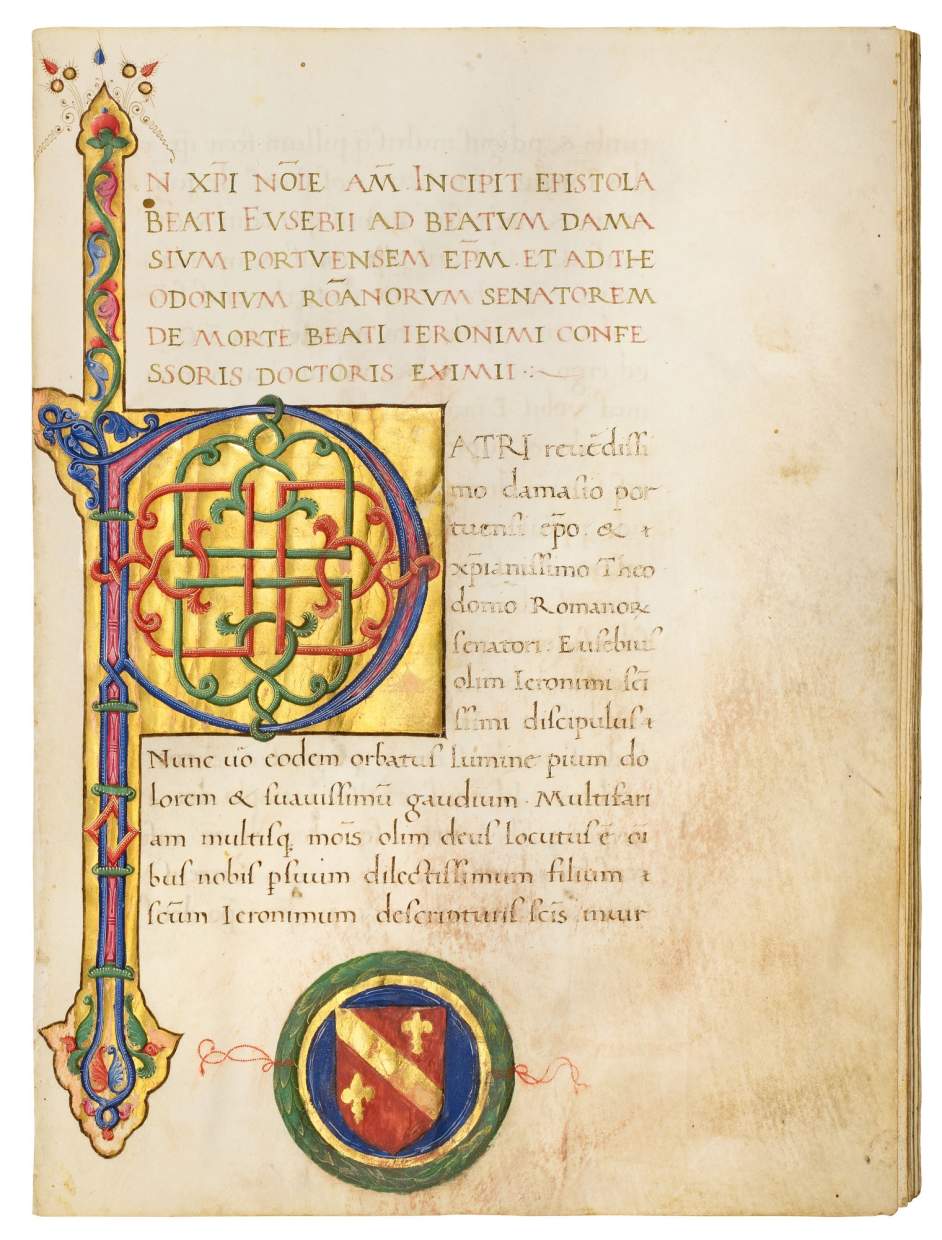

Ps. Eusebius Cremonensis, Epistola ad Beatam Damasium et ad Theodonium (sic Theodosium) Romanorum senatorem de morte beati Hieronimi, – Ps. Augustinus, Epistola ad Sancti Cirilum, – Ps. Cirilus de Jerusalem, Epistola ad Sanctam Augustinum. Decorated manuscript written in Latin, on vellum. Italy, Veneto, c. 1450


Ps. Eusebius Cremonensis, Epistola ad Beatam Damasium et ad Theodonium (sic Theodosium) Romanorum senatorem de morte beati Hieronimi, – Ps. Augustinus, Epistola ad Sancti Cirilum, – Ps. Cirilus de Jerusalem, Epistola ad Sanctam Augustinum. Decorated manuscript written in Latin, on vellum. Italy, Veneto, c. 1450


Ps. Eusebius Cremonensis, Epistola ad Beatam Damasium et ad Theodonium (sic Theodosium) Romanorum senatorem de morte beati Hieronimi, – Ps. Augustinus, Epistola ad Sancti Cirilum, – Ps. Cirilus de Jerusalem, Epistola ad Sanctam Augustinum. Decorated manuscript written in Latin, on vellum. Italy, Veneto, c. 1450

This manuscript, in beautiful handwriting and with finely illuminated initials, contains three letters allegedly written by the early Fathers of the Church. As many texts were handed down anonymously during the Middle Ages, the practice of enhancing the status of a document by adding the name of a highly regarded author was not unusual. In this case, the Epistles are attributed to the esteemed bishops Eusebius of Cremona, Augustine of Hippo and Cyril of Jerusalem. However, the letters themselves were actually written in the middle ages. In fact, they are now thought to have been composed in the 14th century in Dominican circles in Rome and were created to promote the life, death and miracles of St. Jerome. The texts were very popular and circulated widely.
The elegant and formal humanistic script is close to that of Franciscus de Camuciis, a scribe from Vicenza working in Padua, who was responsible for an Aeneid (London, BL, Harley 2726, signed and dated 8 August 1463) and a number of copies of Propertius's Elegies (Vatican, Ottob. Lat. 1514; Leiden, Universiteitsbibliotheek, Voss. Lat. Q. 117; and possibly Bern, Burgerbibliothek, cod. 517).
The opening of each Epistle is highlighted with a finely decorated initial, all three are of high quality, for instance, the initial P in blue and purple/pink on a large field of burnished gold and the golden initial V surrounded by bianco girare in quality pen-work with in-fills of blue, purple, and gold.
The coat of arms in the lower border of the openings page refers to the Porzio family of Naples, perhaps Giacomo Porzio who was Archbishop of Messina in 1449. Later family members include Simone (1496-1554) and his son Camillo Porzio (1526-1580). Simone had a villa in Posillipo on the coast south of Naples. Part of his library merged into the collection of the Augustinian church of S. Maria della Consolazione in the same town.
This is a stunning humanist codex which manifests the medieval practice of attributing texts to famous authors in order to imbue them with additional gravitas. This manuscript is a fascinating witness to this truly medieval practice in elegant humanist form.



